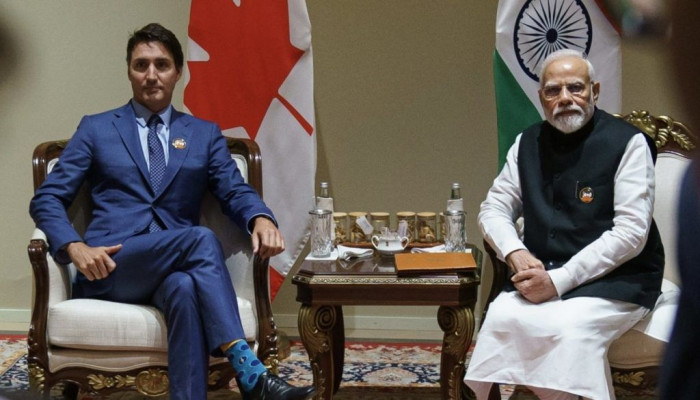There is a requirement to have a re-look into the provisions of the Uttar Pradesh Prohibition of Unlawful Conversion of Religion Ordinance
The Governor of Uttar Pradesh (UP) recently promulgated an Ordinance called the Uttar Pradesh Prohibition of Unlawful Conversion of Religion Ordinance, 2020. It has been promulgated to provide for prohibition of unlawful conversions from one religion to another by misrepresentation, force, undue influence, coercion, allurement, by any fraudulent means or by marriage. The emphasis in the Ordinance is on the prohibition of “unlawful conversion.” A conversion is considered unlawful if it is due to allurement, coercion and so on and also by marriage. An “unlawful conversion” is defined as one that is not in accordance with the law of the land.
According to the new law, a wo/man intending to convert to another religion needs to inform the District Magistrate or Additional District Magistrate at least 60 days in advance and give a declaration that the decision is free from any pressure or allurement and is being done by one’s free choice. Yet, another declaration needs to be submitted within 60 days once the conversion takes place. Only then will the person be able to attain a confirmation certificate that the conversion is lawful. The District Magistrate’s Office has to exhibit a copy of the declarations on the notice board of the office till the date of confirmation of conversion.
However, the UP Ordinance is silent with regard to the nature of the law governing conversions. It does not provide any explanation and contemplates that whoever is involved in the said unlawful conversion shall be punished with an imprisonment of not less than one year, which may extend to five years. The accused person is also liable to pay a fine. Though the punishment is one year to five years, the Ordinance makes the offence cognisable and non-bailable and triable by the court of sessions.
Generally, in criminal cases the burden of proof lies with the prosecution but the Ordinance imposes this burden upon the person who allegedly caused the conversion. And wherever the conversion has been facilitated by any other person, the burden of proof is on them too. It also contemplates that any marriage, which was entered into for the sole purpose of unlawful conversion by a man of one religion with a woman of another religion or vice-versa, either by converting himself/herself before or after marriage or by converting the wo/man before or after marriage, shall be declared void by the family court.
In case, the couple is in an area where the family court is not established, the civil court having jurisdiction in the area can try the case and declare the marriage null and void. There need not be any independent adjudication with regard to a declaration of any marriage as void as per any other law. However, the fact remains that unless a nexus is established between a marriage and unlawful conversion, Section six of the Ordinance, which contemplates marriage to be declared as void by the courts, is not applicable.
The meaning of conversion by marriage is also not explained in the Ordinance and it contemplates conversion by marriage per-se unlawful. Generally two persons belonging to different faiths can get married under the provisions of Special Marriage Act. However, in some cases unless there is a conversion and both, the bride and the bridegroom belong to the same faith, the marriage would not be performed. Conversion would be a prerequisite in such cases. It cannot be said that it is a conversion by marriage. The Ordinance also contemplates that once the person who intends to change his/her religion has made the declaration before the District Magistrate, an inquiry would be conducted by the police with regard to “such an intention of a person to convert.” The report of the police would be a major factor in deciding whether a person can change their religion or not. It would also be instrumental in concluding whether the conversion is illegal and thus, void.
The Ordinance also contemplates a post-conversion procedure. It states that a converted individual shall send a declaration to the District Magistrate and appear for 21 days thereafter before him/her till the objections, if any, received are decided by the District Magistrate. It also contemplates that if the procedure is not followed the conversion becomes illegal and void.
Though the Ordinance protects people from getting converted due to allurement, coercion and so on, there is a scope for abusing the provisions by relying upon the police enquiry report. The Ordinance is silent with regard to the action of the District Magistrate vis-a-vis the police inquiry report. There is a requirement to have a re-look into the provisions of the Ordinance for the purpose of incorporating necessary checks and balances instead of placing more reliance upon a police enquiry report.
However, the UP Government’s anti-conversion move is not unique. In the past too, several States in the country have passed what are referred to as Freedom of Religion Acts or “anti-conversion laws”. These are mostly State-level laws that are aimed to regulate involuntary religious conversions. Odisha was the first State to pass such a law in 1967 and the most recent legislation was passed in Jharkhand and Uttarakhand in 2017. Chhattisgarh, Gujarat and Himachal Pradesh passed their “Freedom of Religion Act” in 2000, 2003 and 2006 respectively. Taking a cue from the others, Rajasthan too passed a similar Bill in 2006. Arunachal Pradesh had already enacted one in 1979 and in 2002 Tamil Nadu passed the Tamil Nadu Prohibition of Forceful Conversion Act. The Supreme Court in the Reverend. Stainislaus Vs. State of Madhya Pradesh case upheld the provisions of the Madhya Pradesh and Orissa Act. Significantly, Madhya Pradesh enacted the Madhya Pradesh Dharma Swatantraya Adhinayam Act way back in 1968 and Odisha enacted the Orissa Freedom of Religion Act in 1967.
The provisions of both the Acts relating to prohibition of forcible conversion and punishment were challenged before the respective High Courts and were carried to the Apex Court. The Supreme Court had held that the freedom of religion enshrined in Article 25 of the Constitution is not guaranteed in respect of one religion only but covers all religions alike and it can be properly enjoyed by a person if s/he exercises her/his right in a manner commensurate with freedom of persons following other religions. It was further held that freedom for one is freedom for the other, in equal measure, and there can therefore be no such thing as a fundamental right to convert any person to one’s own religion. The Apex Court upheld the provisions which prohibit forceful conversion in the background of maintenance of “public order.” The Supreme Court also held that if an attempt is made to raise communal passions, e.g. on the ground that someone has been “forcibly” converted to another religion, it would in all probability, give rise to apprehension of breach of public order, affecting the community at large. However, the present Ordinance incorporates a new concept of conversion by marriage. It presumes that every religious conversion is illegal unless the procedure that has been laid down is followed. The term “love jihad” has not been referred to in the Ordinance and its perusal shows that the same is applicable to all religions. The word “allurement” has been defined widely, which may ultimately be a playing field for the police during its enquiry.
Article 25 of the Constitution of India contemplates that all people are equally entitled to freedom of conscience, the right freely to profess, practice and propagate religion. It means that the Constitution guarantees the right to practice, propagate a religion and in the process a person may impress upon the other to get converted or herself/himself change their religion.
The Ordinance comes into play when such a conversion occurs due to the factors like allurement, coercion and so on. It is inoperative while exercising freedom of conscience. The question is whether the police are equipped sufficiently to conduct an enquiry into these aspects or not, so as to come to a conclusion that the choice of conversion has been made freely without any other factors. There would be a possibility of abuse of processes and filing of criminal cases against those persons who propagate their faith, on the ground that they have instigated the thought of conversion in a person. However, a mere thought of conversion to another religion cannot be made an offence unless it manifests into action.
(The writer is an Advocate in the Andhra Pradesh and Telangana High Courts)








 OpinionExpress.In
OpinionExpress.In















Comments (0)